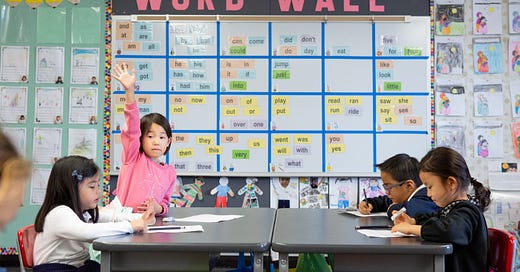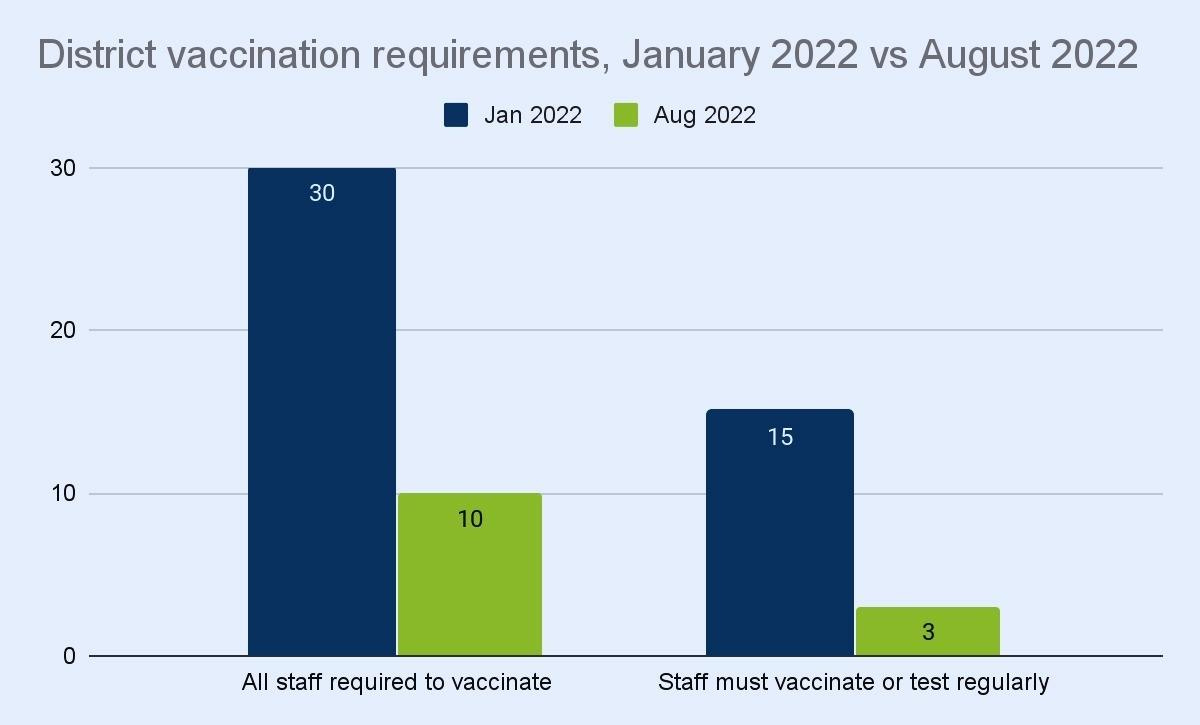August is a special month because it marks the start of my birthday celebrations and the transition to the new school year. This year August threw me a curveball. We had a family lice outbreak, a series of Covid scares, and a chaotic travel schedule. I am grateful for the familiar fall routines, with school and family schedules, including a more consistent #EdPolicyHotlist.
Cheers to a healthy “back-to-school 2022”!
THE WEEKS AHEAD
Wednesday, September 14 (3 PM ET) – Whiteboard Advisors is hosting a “virtual forum on teacher retention,” including a panel of education organizations working in collaboration with schools and districts. Register here.
Thursday, September 15 (9 AM ET) — The Bipartisan Policy Center is hosting a live event in Washington, D.C., and a virtual webinar: Dialogue Across Difference: Students Bridge Divides. Register here.
Thursday, September 15 (10 AM ET) — AASA, First Focus, and FRAC are hosting a webinar on Rethinking the Poverty Indicator: How FRPM Doesn’t Work. Register here.
Monday, September 19 (2 PM ET) — The Aspen Institute Education and Society Program is hosting a panel of state policymakers to discuss new bipartisan Opportunity to Learn principles in state leadership. Register here.
FEDERAL EDUCATION POLICY
Republicans sent Secretary Miguel Cardona a letter asking whether districts were using federal relief funding to address learning losses [HELP].
The Biden administration announced a series of initiatives to strengthen the teacher workforce [WH].
The US Department of Education announced $30 million in assessment innovation grants, including investments in competency-based, science, and multilingual assessments [USED].
The US Department of Education released a back-to-school checklist for families and caregivers, including recommendations for accelerating student learning and ensuring student well-being [USED].
NCES released US Education in the Time of COVID, a synthesis of data sources about schooling during the pandemic [NCES].
Read Dale Chu’s take on the latest round of federal assessment innovation grants [AssessmentHQ].
“In the Department’s flowery press release, the Biden administration sings the praises of each of the proposed projects, which tend to be narrow in scope.”
COVID-19 IN SCHOOLS
Most kids have caught COVID-19 [CDC].
"Fewer districts are also requiring vaccinations this school year, with 10 maintaining strict policies for their staff — just a third of the number that mandated staff vaccinations just six months ago [CRPE].”
ASSESSMENT AND ACCOUNTABILITY
Oregon Department of Education recommends high school graduation requirements [ODE].
A new California bill would ban remedial courses in college [EdSource].
Explore data deep dives on equity, communication, and pathways [DQC].
A new report describes the proportion of students eligible for retention under the Michigan Read by Grade Three Law based on their scores on the 2021-22 third-grade summative assessment [EPIC].
NCES released the latest NAEP results revealing pandemic choices [NCES].
PANDEMIC LEARNING
A handful of states are shining the way for others to address youth suicide and prevention [ECS].
Remote learning options are being codified in some school districts [WSJ].
When the pandemic hit, more schools started going door-to-door to find missing kids. In some areas, this practice isn’t going away [EdWeek].
Indiana is leveraging federal relief funds to implement Indiana Learns through House Bill 1251, a program that will provide families up to $1,000 for after-school tutoring [IN].
EDUCATION REFORM
Jim Cowen wrote about a direct pathway to pandemic recovery through investments and accountability [Forbes].
Times writers address the longstanding question at the root of our education debates, “What is the purpose of school?” [NY Times].
Bellwether launched a new initiative to support an “assembled” education system [Bellwether].
“There’s enormous promise in assembling a more customized approach to schooling, but also real risks to ensure quality and equitable access to services and support.”
In 2022, 37 percent of Republicans gave a D or F grade to U.S. public schools [Brookings].
TEACHER WORKFORCE
Researchers argue that “federal policies can also improve the economic livelihood of teachers” through tax credits or loan programs [ECS].
Nearly every school district and education service district in Oregon has applied for state dollars to offer hiring and retention bonuses ahead of the new school year [OR].
POSTSECONDARY SUCCESS
The Education Commission of the States released two 50-state comparisons on CTE and dual enrollment policies [ECS].
Pennsylvania research collaborative studies new graduation requirements [PA].
Industry-recognized credentials (IRCs) are a unique tool for ensuring postsecondary success and career-connected learning [Fordham].
“High school students most often earn IRCs through career and technical education (CTE), including “concentrating” in several related CTE courses. Some want an IRC, or at least its content, for personal reasons—so they can repair their own car, cook for their family, or even flip houses one day. Others see a high school IRC as part of a stack of credentials to be accumulated, a stack that may include some (or a lot of) college and additional vocational and technical instruction.”
ICYMI
Edunomics hosted a webinar about the potential ESSER hangover and a back-to-school financial forecast [Edunomics].
Dr. Christine M. T. Pitts serves as Director of Impact and Communications at the Center on Reinventing ic Education, overseeing policy leadership and external affairs. A teacher and researcher by training, she previously led research and evaluation for Portland Public Schools and served as Policy Advisor at NWEA, overseeing state and federal policy to advance equity and innovation in educational assessment. Follow her on Twitter and Instagram @cmtpitts.










